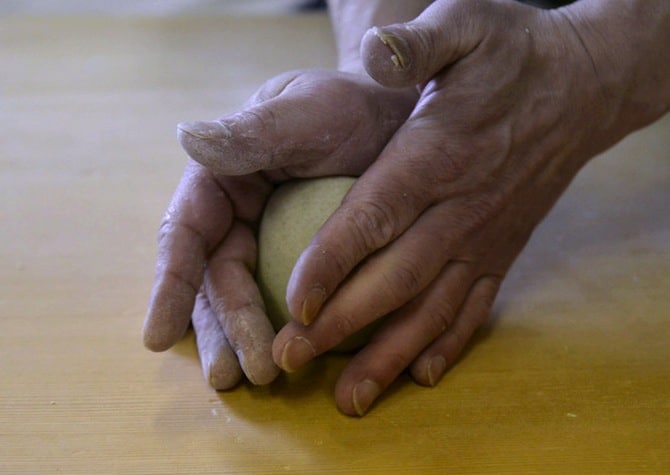
Izushi, Japan, located in the Hyōgo Prefecture less than two hours from Osaka and about two-and-a-half hours from Kyoto, is known for many things: an ancient theater, castle ruins, a preserved old-time feel, and, the focus of this piece, soba noodles.
Home to about 50 noodle shops, Izushi is known for their unique style of serving and eating soba noodles. While most of the country enjoys soba hot and on a large plate or big bowl, in Izushi they eat it cold and served on small Izushi-Yaki white porcelain plates made locally. In fact, it is this local pottery — known for its high quality kakitani tooseki stone sourced from the nearby Kakitani Valley — that began shaping the way locals enjoyed soba during the Edo Period (1603-1868). These noodles were brought to Izushi with the Sengoku family, when they were transferred by the Ashikaga Shogunate from Shinshu. Today, it’s know as Izushi Sara Soba, and consists of handmade noodles with delicious dipping sauces that offer a way for locals and visitors to satiate themselves while strengthening relationships over food.
During a trip to Izushi myself, I had the chance to truly immerse myself in soba culture through a soba cooking class, soba lunch and soba-inspired dessert.
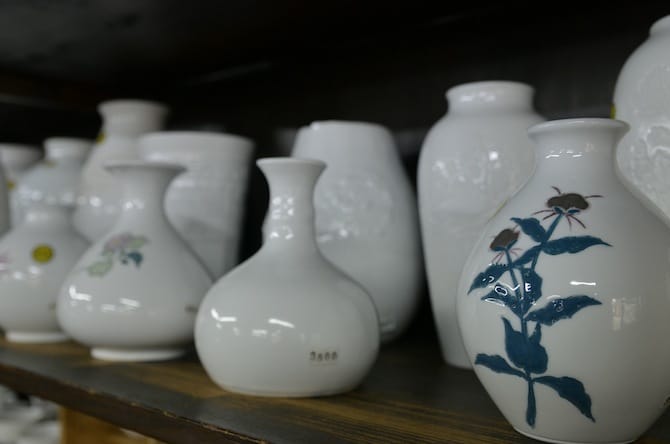
The Class
The class takes place in Irusaya Restaurant (98-10Uchimachi), located in an old traditional Japanese house. Anyone can enjoy a soba making experience at the facility, you just need to make a reservation (details below). As soon as I walk in I’m instructed to wash my hands before being brought upstairs to a spacious room with lots of light woods and natural light streaming in. On the floor is a cushion for kneeling as well as a short wooden table for preparing the soba, topped with a small cup of water and a bowl of flour.
My instructor for the day is, Mr. Kataoka, the restaurant owner and soba master, who will be leading the class in Japanese as my local English-speaking guide, Michiko Moriwaki, translates. The recipe for soba is extremely simple, three ingredients creating a dish that plays a tremendous part in helping to define the local culture.
The flour mixture is made up of 80% buckwheat and 20% wheat flour, because if it were composed of just buckwheat it would be brittle. The amount of water used in the preparation depends on the outdoor weather, what time of day it is and the humidity, and it must be tweaked accordingly as these factors change in order to keep quality consistent.
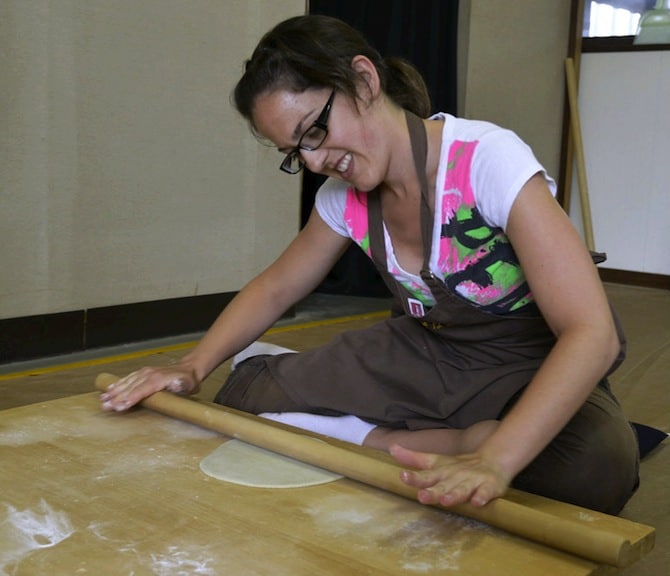
“Generally morning is the best time to make soba as it’s cooler,” explains Mr. Kataoka, as translated by my guide. “But what’s more important is you make the necessary adjustments for your conditions.”
Step one is to pour half the cup of water — today Mr. Kataoka has chosen to have us use 3/4 cup water– and mixing it lightly with our fingertips. He makes his hand into a claw shape to show me the appropriate form. I’m told not to push or grab the mixture, but to mix rapidly with open hands, adding the second half of the water cup when the mixture starts to dry. The dough smells like cornflakes and cakes to my hands like clay, oxygen drying it to my skin to look like brownish warts. At this stage, it’s hard to believe something as tasty as soba noodles would come from this bowl.

When everything is thoroughly mixed, it’s time to hand-kneed it. I do, softly, scared to ruin the dough by being too rough; however, Mr. Kataoka soon comes over and corrects my technique by thoroughly grinding and beating the dough.
When it’s time to use the rolling pin, a thin one that appears about three feet long, the trick is to roll gently, pressing down little by little and saving the edges for last. I’m to rotate the flattened dough in a circular motion with each roll of the pin until it’s nice and smooth. I do okay with the pin, however, I soon realize twirling the dough like a pizza to rotate it is not effective, as lifting it creates bumps that ruin the texture of the mass.
Mr. Kataoka again sees my struggle and comes to the rescue, grabbing the pin and rapidly rolling the dough as if it were on fire. Despite the simple ingredients, soba making is no easy task, as is apparent by the intense expression and bulging muscles displayed on Mr. Kataoka as he kneads.
Before the creation is boiled there’s one more crucial step: actually forming the noodles. A cutting board is placed on top of the crumb and flour covered wooden table, and I’m handed a butcher knife with a blade about 1.2 millimeters thick. Soba noodles should be thin, in this case the same width as the knife. I create a rhythm for myself, cutting through the now folded dough and slightly moving over with the knife, not letting any excess show. While not every noodle is perfect, I can’t help but be proud of my work.

Eating Homemade Soba
Next it’s time for the fun part: eating. As Mr. Kataoka goes to the kitchen to boil the noodles, I’m brought to a room with seat cushions and low tables showcasing an array of ingredients: yamaimo (mountain yam) puree, minced green onion with wasabi and a raw egg and wasabi. In Izushi, where the soba is served cold and on many (typically five) small locally-made plates, one will take the soba sauce (tsuyu) — containing mirin, dashi and soy sauce — base and add one of these ingredients to the mixture for dipping the noodles in.
“Eat it while it’s shiny,” my guide tells me as she brings me the cooked soba I’d prepared. “This is a common expression as you don’t want it to get dry.”
While I first try the mixture with the potato, it makes the sauce too thick for my liking, so I opt for the onion and wasabi, which keeps the thin consistency but adds an enjoyable kick. I end up eating eight small Izushi-Yaki pottery plates of soba.
One thing that surprises me is the way the soba is eaten on its own without the addition of seafood, meat or vegetables. When I ask my guide why this is, she isn’t quite sure, but says it’s typical to eat it like this or as a combination dish with something like tempura or bamboo steamed meat. Delicious.

Compare And Contrast
During the meal, I’m invited to sample soba noodles made by Mr. Kataoka in addition to the ones I made myself. While one may think a noodle is just a noodle, with soba noodles it’s important to think about firmness as well as the thickness of the noodle, as this will affect the mouthfeel and therefore the dining experience. I can imagine how eating a soba noodle that’s too soggy or stiff would negatively alter the meal. Luckily Mr. Kataoka cooked the noodles for me, so the texture is similar, firm but not hard; however, his are thinner and more perfectly uniform, allowing me to concentrate more on the earthy flavors than wondering about varying textures in my mouth. This made me truly appreciate the hard work of the soba master, taking unassuming ingredients and turning them into something spectacular, meant to be slurped and enjoyed with abandon.
One way they do diversify the meal even without tempura or meat is by taking their personal dipping sauce and adding the hot water the soba had been boiled in the create a soup. This helps aid digestion and is also tasty.
If I was ever in doubt of how passionate Izushi was about soba, I’m told about an annual soba eating festival that occurs each year on the third Sunday of April during the cherry blossom festival. While over 5,000 people try out, only 100 are allowed to participate. In 2014 the winner was a female who ate 153 plates of soba in 10 minutes. Talk about girl power (and a taste for soba).
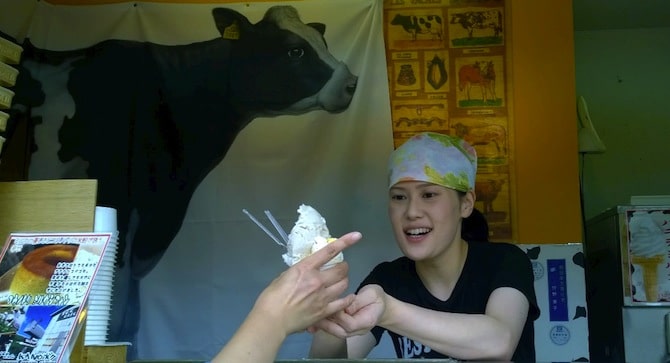
A Soba-Inspired Dessert
As I love dessert and this is soba town, I head across the street to Kano Farm, which I’m told is the best ice cream in town (and I believe it from the line). This ice cream shop actually has their own creamery, giving the ice cream a thick and soft milk consistency and fresh taste. The menu showcases an array of Japanese flavors: chocolate, rice wine, raspberry, blackberry, vanilla, caramel macchiato, milk and milk black soybean, cafe latte, green tea, and, my scoop of choice buckwheat soba.
I’m not sure what to expect. Would the ice cream actually taste like pasta? Luckily, the answer to that question is no, as flavors of coffee and cinnamon envelop my palate. Soba noodles with soba ice cream: the perfect combination in the perfect place.
Soba Deal
Through the local tourism office right near the Shinkoro clock tower one can purchase a pass for about $17 that allow the to dine at three different soba restaurants. The pass is good for any three restaurants of the pass holder’s choosing in town.
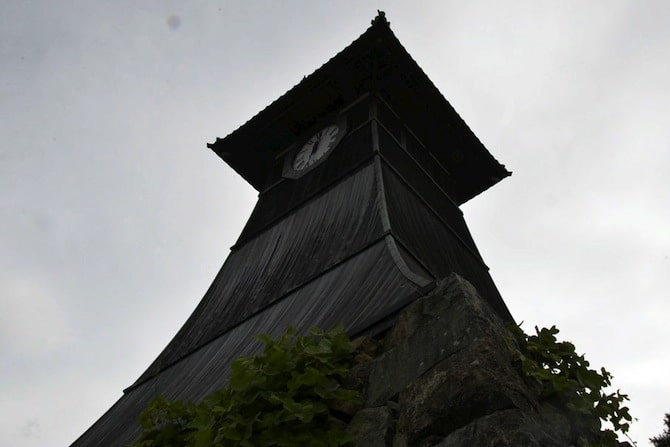
Continuing The Cultural Exploration
There’s much more to Izushi than just eating — although that’s certainly one of the most important aspects to explore. The reason they call Izushi “Little Kyoto” is because of its preserved heritage and old world charm. The town was at its most powerful during the Edo period, and today sites related to samurai families and castles still remain.
Begin your day with a view of the Shinkoro clock tower, sitting in front of the Izushi Castle ruins, which are pretty well-preserved and provide a great aerial view of the town and backward look into history, dating back to 1604. There’s also Izushi-to Sukyo Temple, which served as the house if worship of the Izushi Castle lord. Buddhist priest Takuan Osho restored it in 1616, and today visitors can explore the grounds and gardens or take part in a guided zen meditation with advance reservation.
Possibly the best historical attraction, especially if you take a tour, is Eirakukan. This theater was built in 1901, the only Kinki Region theater still standing constructed during the Meiji Era and the oldest in Japan still residing in its original spot. It has retained much of the original features, like a hand-cranked revolving stage, trap cellar, a suppon, 100-year-old advertisements, cushion seats with raised wooden planks for waitresses to walk slightly above the crowd, and dressing rooms in rafters above the stage. Visitors can explore the arts and take a behind-the-scenes tour of get to know local culture through traditional performances like kabuki, rakugo and kyogen.
Getting There
To get to Izushi one must first take a train to Toyooka Station, where you’ll board a bus for Izushi. This bus ride takes about 30 minutes. Trains run pretty frequently, and there are 20 buses per day. Once there, Izushi is easily explored on foot.
Booking A Soba-Making Experience
To reserve this experience, you can have your hotel call +81-796-21-9016 (Toyooka Tourist Association) or 0796-52-4806 (Tajima Izushi Tourist Association) or email [email protected].
For an English or Spanish-speaking local guide, Michiko Moriwaki can be contacted at moriwaki.michiko (at) gmail (dot) com.
Have you had a memorable Japanese food experience? Please share in the comments below.
Also Check Out:
Food & Culture On The Amalfi Coast
Immersive Travel: Your Ultimate Guide To Japanese Culture
A Photo Guide To Okinawa’s Innovative Ryukyu Nouvelle Cuisine
Jessica Festa
Latest posts by Jessica Festa (see all)
- A Culturally-Immersive Adventure In Mongolia’s Altai Mountains - Jul 8, 2023
- This Recipe Sharing Platform Supports Women In The Culinary Industry (Labneh Recipe Included!) - Nov 5, 2020
- Hiking The Mohare Danda Community Eco-Trek In Nepal - Jun 3, 2020
- 6 Important Questions For Choosing A Responsible Yoga Retreat - May 18, 2020
- How To Create & Grow A Profitable Blogging Business (Ethically) - Jan 18, 2020

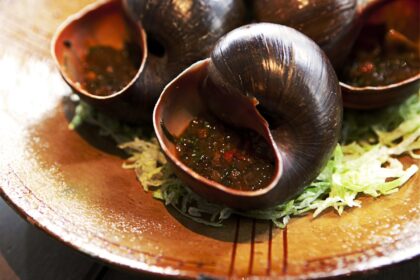
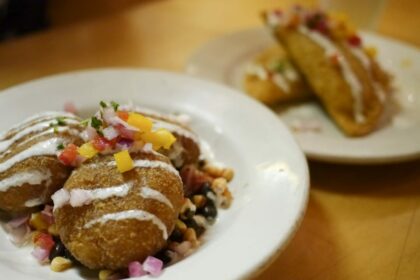
Hey. How much is this soba making class?